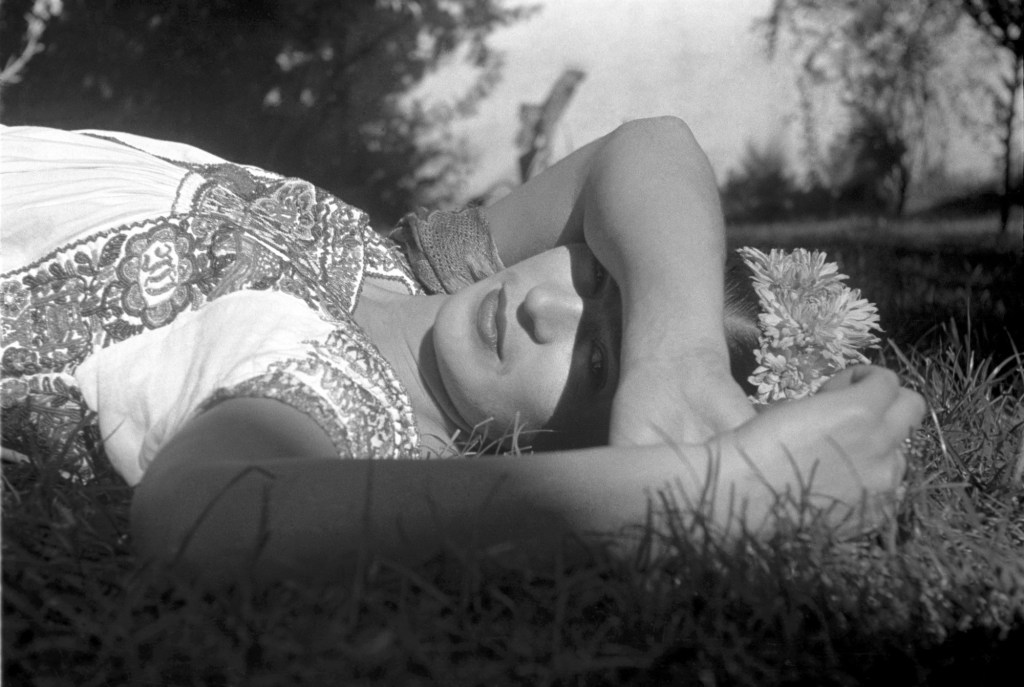How ‘Frida’ director Carla Gutierrez rediscovered material about the iconic Mexican artist – Daily News
GoogleAds

“Frida” is a new documentary film from director Carla Gutierrez in which the narration is primarily taken directly from the letters, interviews and diaries of the Mexican artist Frida Kahlo. (Photo courtesy of Amazon MGM Studios)
Documentary filmmaker Carla Gutierrez still remembers the moment her obsession with Mexican artist Frida Kahlo began more than two decades ago.
“I hadn’t seen her art until I was a freshman in college,” says Gutierrez, a film editor who makes her directorial debut with the new documentary “Frida.” “Then I found one piece, one painting in a book in the library.
“It was of her standing between the United States and Mexico,” she says. “You can see her full body – we actually use that painting in the film. And I was a pretty new immigrant. I had been in the States for, I think, two to three years.
“I really saw my experience reflected there,” she says. “A little bit of hesitation about my new surroundings and really missing home.
“So I feel like the story for me, it started back then,” says Gutierrez, who also co-edits the film, a role she’s previously done on such documentaries as “RBG” about Supreme Court Justice Ruth Bader Ginsburg, and “Julia,” about chef Julia Child. “When I came back to her story at 47 years old, I was actually the same age [she was when she died] when I started looking into her story. Which was kind of shocking to me.”
By then, Gutierrez had explored beyond Kahlo’s 1932 oil painting “Self-Portrait on the Borderline Between Mexico and the United States” that had originally inspired her.
“I spent a couple of decades or more, really connecting to some of her paintings,” she says. “Really following her life very closely.
“Then I went back to the material that had I read back then, and I realized that her voice existed in writing from a lot of different sources,” Gutierrez says. “The books that I was reading at that time just kind of showed me that a story about her could be told through her voice, some of it.”
“Frida,” a colorful, creative portrait of the artist told and illustrated in her own words and brush strokes, arrives on Prime Video on Thursday, March 14.
Searching for Frida
Gutierrez says from the start she wanted to avoid the contemporary talking heads that populate many documentaries on historical figures.
“We never wanted to do interviews, or kind of look at her life from that historical perspective in the sense of art historians or artists who had been inspired by her,” she says. “We wanted for the film to feel as present and as much of her as possible.
“So that’s how it started, with this idea that we could offer an intimacy into her life that had maybe not been shown on film,” Gutierrez continues. “Like really, truly focusing on her words and her voice as much as we could.
“And then it surprised us that by leaning into mostly her emotions, and not necessarily a factual list of what happened in her life, she really took over,” she says. “We just started being guided by her writings as much as we could.”
While Kahlo’s fame as both artist and icon didn’t fully blossom until years after her death, the filmmakers were fortunate that she was nonetheless a well-known and well-documented figure throughout her life. Born in 1907 in a village on the edge of Mexico City, her father, a professional photographer, documented her childhood and young adulthood through the lens of his camera.
After her marriage to the Mexican artist Diego Rivera in 1929, she traveled with him extensively in Europe and the United States, where his fame and her striking looks and style made her a favorite of journalists and photographers.
For Gutierrez, the detective work the film required to track down both visuals and words for the film was a delight.
“The research that went into collecting all of her writings was really intense,” she says. “We not only collected all her writings, but we also did a lot of research on contextual material. We tried to gather every interview from people that knew her that we could find. And the research took us into some interesting places.”
Biographer Hayden Herrera, who wrote the seminal 1983 biography on Kahlo was an obvious choice for Gutierrez and her researchers. Her papers had been donated to the Smithsonian, Gutierrez says, but on going there they discovered that none of the material for “Frida: A Biography of Frida Kahlo,” including scores of interviews with people who knew Kahlo, was there.
“So then we very nicely asked if we could visit her house in Cape Cod,” Gutierrez says. “She’s about 85 years old. And we went up to her attic, and we cleaned her attic, and we found these enormous boxes with all the original research that she did on that book.”
Letters Kahlo sent her San Francisco doctor, who became a close friend, were tracked down in the Oaxaca Museum of Art, she says. Letters she wrote to her mother were located in the National Museum of Women in the Arts in Washington D.C.
“There was a couple called the Crommies, who are in San Francisco, who made a film about Frida,” Gutierrez says of the 1966 short documentary “The Life and Death of Frida Kahlo as Told to Karen and David Crommie.” “They did a lot of interviews with people, like with the nurse that took care of Frida in the last years of her life.
“When I went to their house, they brought up a box full of quarter-inch tapes that hadn’t seen the light of day for 50 years,” she says. “We just lifted up every potential rock out there to find as much as we could.”
An intimate voice
Gutierrez says she started the project well aware of the outward facts of Kahlo’s life. Making the film, and focusing on Frida’s own words, most of which she never expected would be read by those outside her intimate circles, allowed Gutierrez to enter the heart and mind of the artist.
“I knew the facts of her life really well because of the books that I had read,” she says. “Really listening to the texture of her personality was special. That was really new and refreshing to get to know her in a new way, through her own words.
“Like, I knew about her feelings on America, and I knew some of her feelings of Paris intellectuals. But to be able to read everything that she had said about them, and the sharp language that she used was really special.”
That unfiltered voice, at different times funny, poignant or salty, adds greatly to the narration of Kahlo’s words delivered in the Spanish or English in which they were written.
“There were two letters, one written in Spanish, and the other one written in English, with a lot of flowery language about Parisian intellectuals,” Gutierrez says. “That the only thing they do is talk and talk and talk among themselves in cafes and parties. I don’t think she ever got tired of insulting them.
“So really, (we found) the intimacy of her voice itself, but also kind of the messiness of her feelings, and the messiness of being able to really read about her fragility and her fears,” she says. “For example, in the scene about her miscarriage, her letters talking about, or questioning, what decision she is going to make.
“Really, the tenderness of a woman just dealing with regular, but really heavy and important things in her life was really special.”
Art and movement
Beyond the choice to use Kahlo’s own words as the main narration of the film, Gutierrez’s second big decision was to animate some of Kahlo’s art, adding motion to paintings and sketches that had been static works of art on museum walls or artbook pages.
“It was a bold decision,” Gutierrez says. “It could be seen as a controversial decision to touch Frida’s art. But it was a decision I made at the very beginning because I knew that we were working in this cinematic universe. And we were thinking from the very beginning, you know, Frida’s paintings kind of carry her mind and carry her heart, so how do we immerse our audience in this kind of cinematic space into that internal world?
“I really wanted for the film to be able to highlight the emotions that we wanted to underline in the art,” she says. “As we’re talking about moments in her life that made art possible. It was essential for the film to make that really strong connection. What had her lived experiences brought to her art?”
Gutierrez, who was born and raised in Peru before immigrating to the United States, felt comfortable working with the culture of Latin America, but she wanted to find as many Mexican collaborators as possible, given Kahlo’s roots there, and ended up with a mostly Mexican, mostly female team of animators on the film.
She says none of the animations used in the film added elements to the artwork Kahlo had created. Instead, elements already in the paintings now move to underscore the words they accompany.
“For example, where you see the painting of her cutting her hair,” Gutierrez says. “You know it’s coming from a place where she actually felt a lot of self-hate for being in the situation. She didn’t love herself that much. There was desperation. There was a lot of hate. There was a lot of anger.
“So I wanted the movement that we created with the painting to really capture that,” she says. “Then you end up with a painting that really carries all of that anxiety and anger and, you know, desperation that she was living in that moment. So that was the decision.”
Source : https://www.dailynews.com/2024/03/08/how-frida-director-carla-gutierrez-rediscovered-material-about-the-iconic-mexican-artist/amp/
Author :
Date : 2024-03-08 16:29:53
GoogleAds




